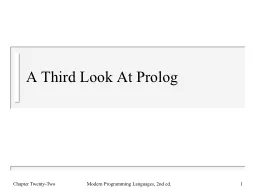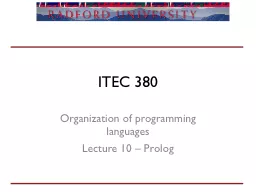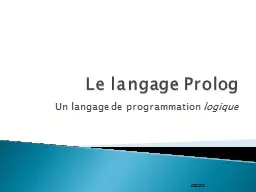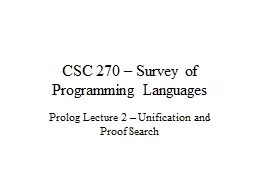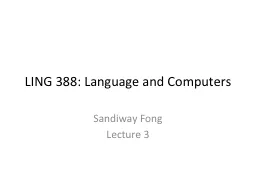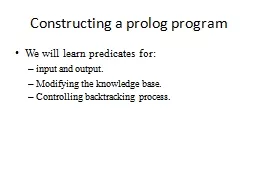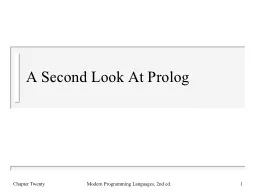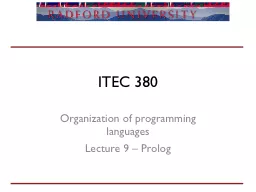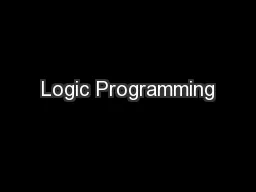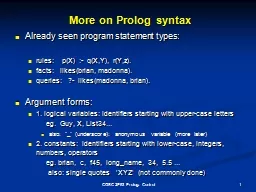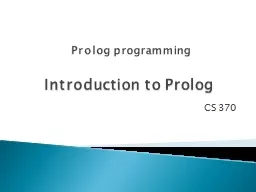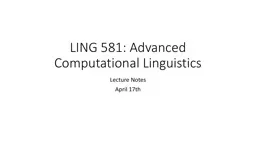PPT-A Third Look At Prolog
Author : kittie-lecroy | Published Date : 2016-04-08
Chapter TwentyTwo Modern Programming Languages 2nd ed 1 Outline Numeric computation in Prolog Problem space search Knapsack 8queens Farewell to Prolog Chapter TwentyTwo
Presentation Embed Code
Download Presentation
Download Presentation The PPT/PDF document "A Third Look At Prolog" is the property of its rightful owner. Permission is granted to download and print the materials on this website for personal, non-commercial use only, and to display it on your personal computer provided you do not modify the materials and that you retain all copyright notices contained in the materials. By downloading content from our website, you accept the terms of this agreement.
A Third Look At Prolog: Transcript
Download Rules Of Document
"A Third Look At Prolog"The content belongs to its owner. You may download and print it for personal use, without modification, and keep all copyright notices. By downloading, you agree to these terms.
Related Documents

